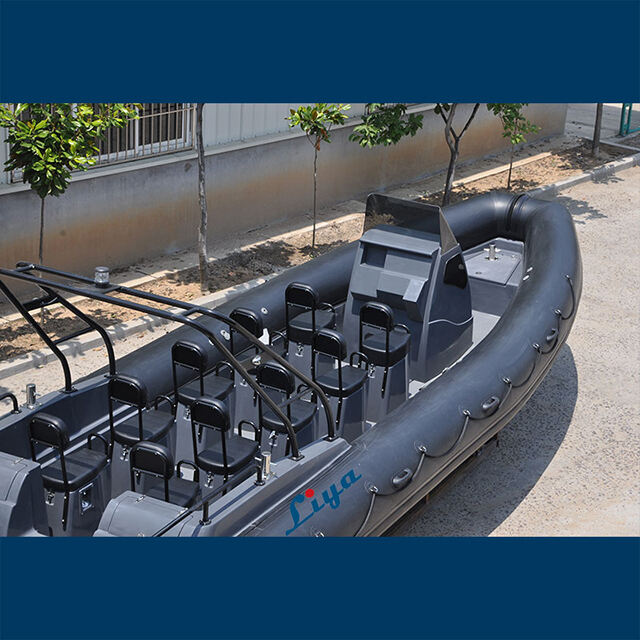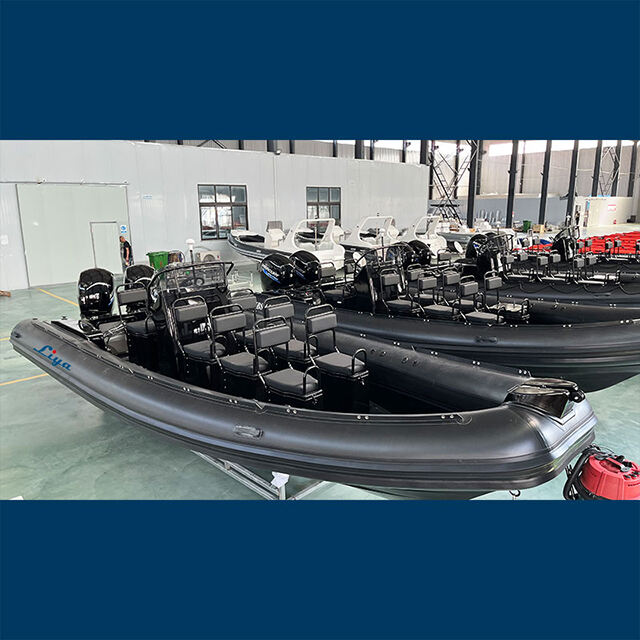The Evolution of Maritime Rescue Vessels
Maritime rescue operations have undergone a remarkable transformation over the past decades, with Navy RHIBs (Rigid Hull Inflatable Boats) emerging as the cornerstone of modern search and rescue missions. These versatile vessels combine the durability of a solid hull with the buoyancy of inflatable tubes, creating the perfect platform for challenging maritime operations.
From their humble beginnings as simple inflatable craft, Navy RHIBs have evolved into sophisticated rescue vessels equipped with state-of-the-art navigation systems, advanced communication equipment, and powerful propulsion systems. Their ability to operate in extreme conditions while maintaining stability and maneuverability has made them indispensable assets in maritime emergency response.
Technical Specifications and Design Features
Hull Construction and Materials
The foundation of every Navy RHIB begins with its robust hull design. Constructed from marine-grade aluminum or advanced composites, the rigid hull provides exceptional strength and impact resistance. The inflatable collar, typically made from heavy-duty Hypalon or similar materials, offers additional buoyancy and shock absorption, crucial for operations in rough seas.
Modern Navy RHIBs incorporate sophisticated hull designs that minimize water resistance while maximizing stability. The deep-V hull configuration enables these vessels to cut through waves efficiently, reducing impact and improving crew comfort during high-speed operations.
Propulsion and Performance Capabilities
Navy RHIBs are powered by high-performance outboard or inboard engines, carefully selected to provide optimal power-to-weight ratios. These vessels can achieve impressive speeds exceeding 40 knots, crucial for rapid response in emergency situations. The advanced propulsion systems are engineered to deliver exceptional maneuverability and reliable performance in diverse weather conditions.
Fuel efficiency and range have been significantly improved in recent designs, allowing Navy RHIBs to conduct extended search and rescue operations without the need for frequent refueling. The integration of electronic engine management systems ensures consistent performance while minimizing maintenance requirements.

Operational Capabilities in Search and Rescue
All-Weather Performance
One of the most remarkable aspects of Navy RHIBs is their ability to operate effectively in adverse weather conditions. The combination of a robust hull design and inflatable collar provides exceptional stability, allowing these vessels to maintain operational capability in waves up to 4 meters high. This all-weather performance is crucial for search and rescue missions that cannot wait for ideal conditions.
Advanced shock mitigation systems and ergonomic seating protect crew members from the physical stress of operating in rough seas, enabling them to remain effective throughout extended missions. The self-righting capability of modern Navy RHIBs provides an additional layer of safety during extreme weather operations.
Rescue Equipment Integration
Modern Navy RHIBs are designed to accommodate a comprehensive array of rescue equipment. From medical supplies and stretchers to specialized lifting gear, these vessels serve as mobile rescue platforms. The spacious deck layout allows rescue teams to work efficiently while maintaining stability and balance.
The integration of advanced navigation and communication systems enables precise coordination with other rescue assets, including helicopters and larger vessels. Thermal imaging cameras, searchlights, and radar systems enhance the ability to locate and assist casualties in low visibility conditions.
Maritime Law Enforcement Applications
Coastal Security Operations
Beyond their primary search and rescue role, Navy RHIBs play a vital role in maritime law enforcement. Their high speed and maneuverability make them ideal platforms for intercepting suspicious vessels and conducting boarding operations. The robust construction allows these vessels to operate effectively in the challenging conditions often encountered during coastal security missions.
The versatility of Navy RHIBs enables seamless transition between law enforcement and rescue operations, maximizing the utility of these valuable assets. Advanced surveillance equipment and secure communication systems support coordinated operations with shore-based facilities and other maritime units.
Port Security and Protection
In port environments, Navy RHIBs serve as rapid response vessels for both security and safety operations. Their shallow draft allows access to areas inaccessible to larger vessels, while their speed enables quick reaction to emerging situations. The presence of these capable vessels serves as a visible deterrent to potential threats while providing immediate response capability for maritime emergencies.
Modern Navy RHIBs are equipped with sophisticated sensor systems that enhance situational awareness in busy port environments. The ability to quickly deploy and recover these vessels from larger platforms adds another dimension to their utility in port security operations.
Future Developments and Innovations
Autonomous Capabilities
The future of Navy RHIBs includes the integration of autonomous systems that can enhance operational capabilities while reducing risks to personnel. Remote operation capabilities and automated navigation systems are being developed to enable these vessels to operate in extremely hazardous conditions or serve as force multipliers in large-scale operations.
Artificial intelligence and machine learning algorithms are being incorporated to improve decision-making capabilities and optimize mission performance. These technological advances will further enhance the effectiveness of Navy RHIBs in search and rescue operations.
Environmental Considerations
As environmental concerns become increasingly important, manufacturers are developing more sustainable propulsion systems for Navy RHIBs. Hybrid and electric propulsion options are being explored to reduce environmental impact while maintaining operational capabilities. Advanced materials and construction techniques are also being implemented to enhance durability and reduce maintenance requirements.
The integration of renewable energy systems and improved fuel efficiency technologies will ensure that Navy RHIBs remain effective while meeting increasingly stringent environmental regulations.
Frequently Asked Questions
What makes Navy RHIBs different from standard rescue boats?
Navy RHIBs combine military-grade construction standards with specialized rescue capabilities. Their unique design featuring a rigid hull with inflatable collars, advanced propulsion systems, and comprehensive rescue equipment integration sets them apart from conventional rescue boats. They are specifically engineered to operate in extreme conditions while maintaining exceptional performance and crew safety.
How long can Navy RHIBs operate continuously?
Modern Navy RHIBs are designed for extended operations, typically capable of operating continuously for 8-12 hours depending on conditions and usage patterns. Advanced fuel management systems and efficient engines contribute to their impressive endurance, while ergonomic design features help maintain crew effectiveness during prolonged missions.
What specialized training is required to operate a Navy RHIB?
Operating a Navy RHIB requires comprehensive training in vessel handling, navigation, emergency procedures, and rescue techniques. Crew members must complete specialized courses covering rough weather operations, medical response, and technical systems operation. Regular training exercises ensure operators maintain proficiency in all aspects of RHIB operations and rescue procedures.

